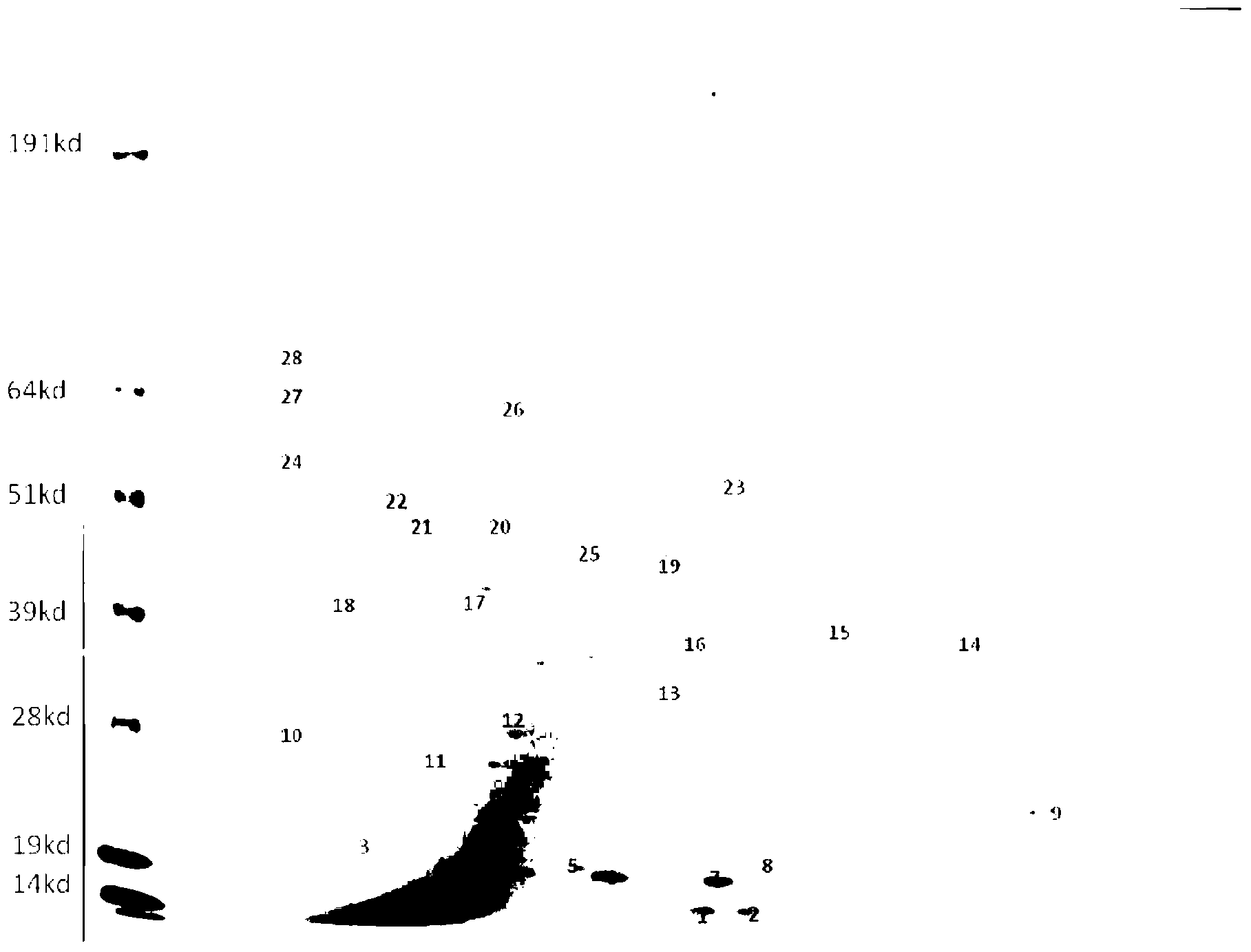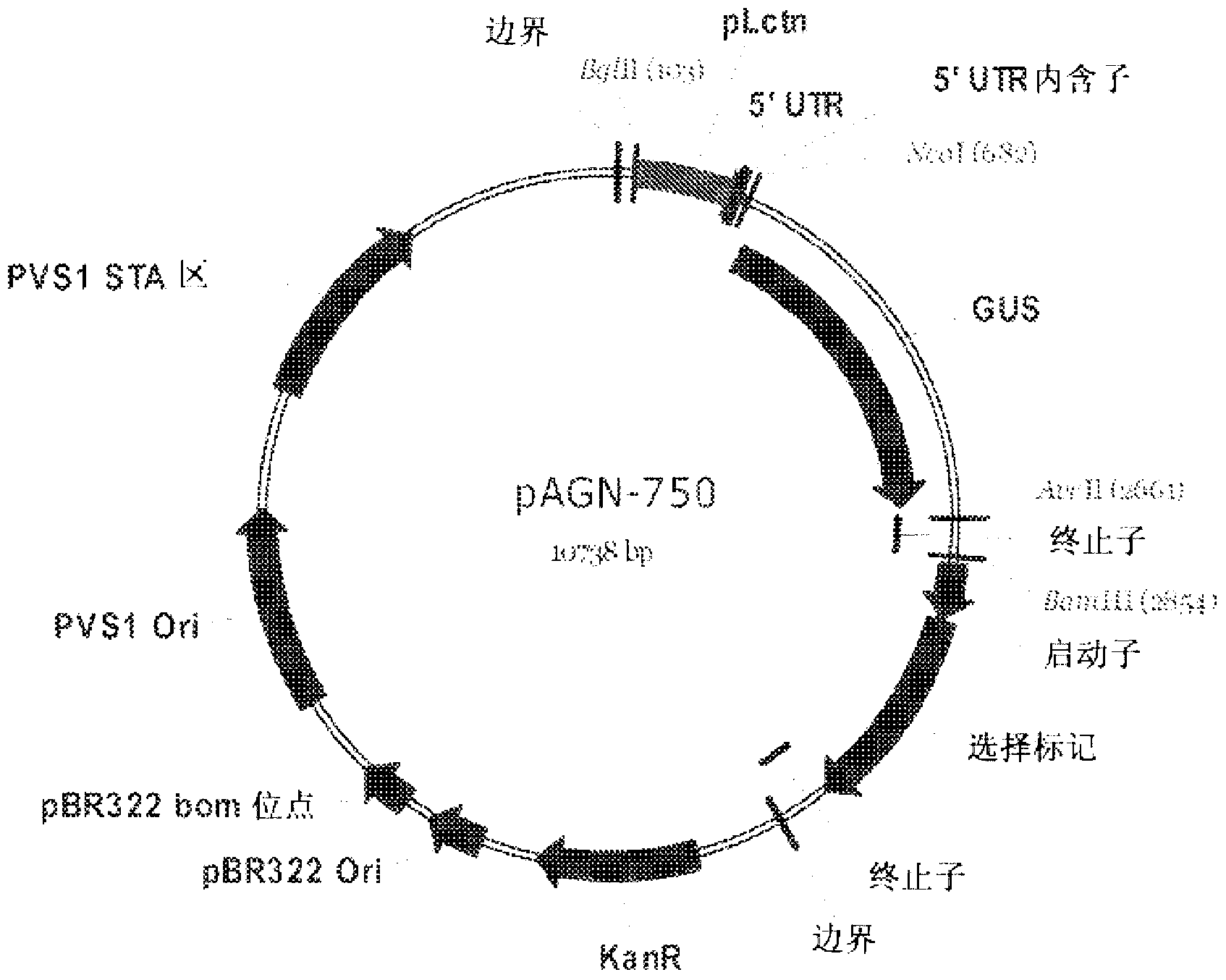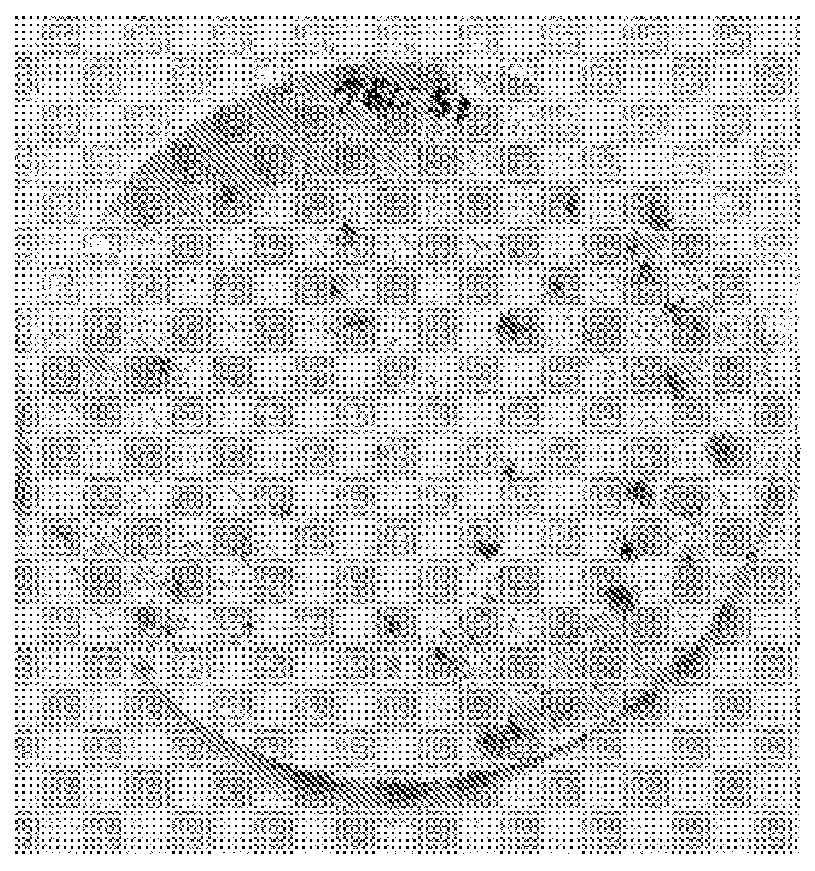Regulatory element for heterologous protein production in the fruiting body of filamentous fungi
A technology of regulatory elements and filamentous fungi, applied in fungi, using vectors to introduce foreign genetic material, sugar derivatives, etc., can solve problems such as different promoter regions
- Summary
- Abstract
- Description
- Claims
- Application Information
AI Technical Summary
Problems solved by technology
Method used
Image
Examples
Embodiment 1
[0075] Example 1. Identification of the highly expressed lectin gene sequence from Agaricus bisporus
[0076] Using the 2-D protein profile of total soluble protein, it was determined that the lectin gene was highly expressed in the fruiting bodies of Agaricus bisporus. The selected fruiting bodies (commercial intermediate hybrid strains) are close to maturity, but have no exposed gills. The newly harvested fruit body tissues were frozen in liquid nitrogen, ground with a mortar and pestle, extracted with cold acetone, 20% trichloroacetate and 0.2% dithiothreitol, and submitted to Alphalyse Inc. (Palo Alto, CA) for 2-D protein profiling. The resulting gel image is shown in figure 1 in.
[0077] figure 1 .2-D Gel Analysis of Agaricus bisporus Fruit Body Protein
[0078] According to the manufacturer’s recommendation, use Invitrogen’s IPG drystrips for one-dimensional isoelectric focusing and the NuPAGE precast gel system for two-dimensional separation to perform protein separation o...
Embodiment 2
[0080] Example 2: Isolation and sequencing of the 5'upstream DNA region of the lectin gene containing the promoter
[0081] Using Genome Walking (APAgene TM Gold Genome Walking Kit, BIO S&T Inc. Montreal, QC, Canada) was used to isolate the 5'upstream DNA region of the genome of the lectin gene. According to the lectin cDNA sequence, the following primers were designed: lectin-F1 (5'-TTCGTTCAACGGGACGGAAGAAGCCTTT-3') and lectin-F2 (5'-TCTGGTAGACGCGAATGCTGATGGTGTA-3') (Crenshaw et al., 1995), and used for genome steps shift. The AquaGenomic Kit (MultiTarget Pharmaceuticals LLC, Salt Lake City, Utah) was used to extract the genomic DNA of Agaricus bisporus and used as the basis of APAgene TM The protocol provided by Gold Genome Walking Kit is a template for genome walking PCR. In short, add 4 aliquots of 15-μl PCR reaction mixture to PCR tubes labeled A, B, C, and D. Use 3x APAgene Gold Buffer I for tubes A and B, and for tube C And D use APAgene TM Gold buffer II. 15μl pr...
Embodiment 3
[0084] Example 3: Demonstrating the ability of the lectin promoter to direct the expression of the GUS reporter gene in Agaricus bisporus
[0085] Construction of the binary vector pAGN-750( figure 2 ) To test the ability of the lectin promoter (called pLctn) to drive the expression of the β-glucuronidase (GUS) reporter gene in Agaricus bisporus. Using primers Lctn-BglII (5'-AGCTTAGATCTGAACACGCG TCGTTTACCTCC-3') and Lctn-NcoI (5'-GTAAGTCCATGGTCTGCTCAACGTTATGAGTTAGTTG-3'), pLctn was amplified from pAGN-745. The restriction enzyme sites BglII and NcoI were incorporated into the primers to facilitate cloning. The PCR product was digested with BglII / NcoI, and the digested product was used to replace the BglII-NcoI fragment in the GUS expression vector pAGN-030 to produce pAGN-750. The sequence in pAGN-750 was confirmed by sequencing. Following the transformation method described by Chen et al. (2000), pAGN-750 was introduced into Agrobacterium tumefaciens and then Agaricus bisporu...
PUM
 Login to View More
Login to View More Abstract
Description
Claims
Application Information
 Login to View More
Login to View More - R&D
- Intellectual Property
- Life Sciences
- Materials
- Tech Scout
- Unparalleled Data Quality
- Higher Quality Content
- 60% Fewer Hallucinations
Browse by: Latest US Patents, China's latest patents, Technical Efficacy Thesaurus, Application Domain, Technology Topic, Popular Technical Reports.
© 2025 PatSnap. All rights reserved.Legal|Privacy policy|Modern Slavery Act Transparency Statement|Sitemap|About US| Contact US: help@patsnap.com



